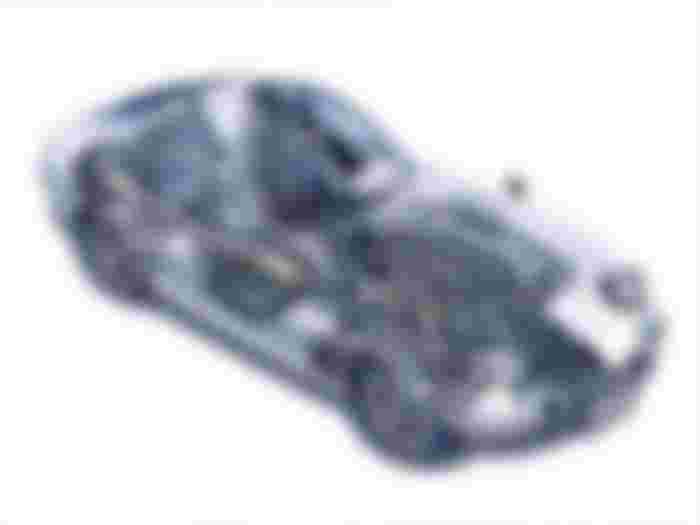Breaking the Mould - Toyota 2000GT (1967-1970)
In the automotive world that has allowed our civilisation to travel onto faraway places with ease, there exists a diversity of motorised carriages, each one with their respective, singular purposes. For whatever adventure that you wish to embark, there is a suitable automobile to take you on that journey.
Among those classes of automobiles, with crossovers, hatchbacks, sedans, and the like; there has been one class which have reigned the top of that hierarchy. They have done so through their display of beauty and power, a public show which awes all those who bow to them. This uppermost echelon of automobiles, as we refer to them, are known as supercars.

Every supercar's birth right is to uphold this honour, as they have done so for decades. Amongst the very best, are those household clans which we have become familiar with; Ferrari, Lamborghini, Porsche, McLaren, Aston Martin, and so forth.
Yet, there is one noble house among them that have more often been side-lined - Toyota. This is a company well regarded for quality, practicality, and innovation, with vast reaches and wealth across the world. Perhaps then, it is this production which has allowed the them to be more associated with the lesser automotive classes.
From the land of the rising sun.
The one time in recent memory, where Toyota has made its contribution amongst the supercar clans, was the Lexus LFA, engineered and badged under their luxury subsidiary. The LFA was a supercar to break-up the public's image as to what a Lexus car was, and that was of bland, uninspiring luxury.


And they have done that task so marvellously, with the LFA being the very opposite of bland. It was a supercar by definition, fitted with a high-revving V10 engine, yet coupled with the traditional luxury and reliability that is expected from a Lexus.
However, the LFA was not Toyota's first "breaking the mould " supercar. This endeavour was first explored by Toyota some four decades earlier, in what many consider today, to be Japan's first supercar.

It was the mid-60s, and Toyota had just lifted the veil on the endlessly pretty Toyota 2000GT, a car designed to break the ordinary stereotype of what Japan's car industry would be capable of. Back then, Japan's carmakers were known around the world for their stodgy and practical economy cars, produced in a country where radiation was still felt, from two atomic bombs which dropped only 20 years ago.
But amongst Japan's stodgy automakers, Toyota was at the peak, and known to be the most conservative amongst them at the time. The corporate brass, keen to change this image, was given a golden opportunity by one of their external contractors, Yamaha.


What they had been working on was something that was wildly radical from what Toyota, or any other Japanese carmaker at the time, was accustomed to; a high-performance grand-tourer to rival the very best from the West. This very plan by Yamaha, had just in fact been rejected by Nissan.
Yet, despite this seemingly precarious prospect, Toyota and Yamaha went ahead anyways. Revealed at the 1965 Tokyo Motor Show, it instantly captivated the oncoming crowds, even among those who've usually branded themselves with European exotics. It was one of the prettiest car to have graced humankind, and certainly different from the boxy Japanese cars then.
A car to sit in, ride, or simply to admire.
The bodywork, all hand-made by the very best craftspeople from Japan, a country known for its attention to detail and aesthetics, resulted in a swoopy and curvy body, which was all curves and no edges. The design was inspired by Jaguar's E-Type. However to my eyes, while I'm sure some of you may disagree, the 2000GT looked better than anything I've ever seen coming from the Midlands.

The gentle, and sultry lines run along the car, tapering off at the rear to create a fastback profile. One aspect of the 2000GT's design was its exceptionally low height of just 116 cm (45.7 in) at its highest, which made it appear so much sleeker than it ought to be. One downside of this particular design trait, and we've more to talk about it later, was the packaging of componentry.
As the curvy lines made it difficult for certain parts of the car to be reached, especially from the bonnet, 2 panels were placed on each side of front quarter, which allowed access to the battery, air filter, and a reservoir for the wiper fluids.


At the front, there are two intricately designed housings for the pop-up headlights, both sitting above more traditional lights, and is inspired by the look of the Toyota Sports 800, Toyota's first sports car.
Under the bonnet sits a 2.0L straight-6 engine, which itself came from Toyota's flagship sedan, the Crown, and reworked by Yamaha. This engine, with 3 double-barrel Mikuni-Solex carburettors, produced 148 hp, and 129 lb-ft of torque, powering the rear wheels through a 5-speed transmission, which allowed for acceleration to 60 mph in 10.0 seconds, and onto a top speed of 135 mph. Similar to the BMW 507 which I recently wrote about, the 2000GT is a gentle cruiser.


As gentle as it may be however, it can pack a punch if needed. Journalists from Road & Track at the time, considered the 2000GT to be one of the most exciting cars they’ve driven, even when compared to a Porsche 911. Carroll Shelby also saw the athleticism of the 2000GT, and raced them in the 1968 SCCA races back in the States.
As for its home territory, the 2000GT won third place in the 1966 Japanese Grand Prix, and won the Fuji 1000 Kilometres race of 1967, while setting some world speed, and endurance records respectively along the way.

Moving to the interior, the 2000GT was a luxurious affair, befitting its grand-touring nature. The sumptuous cabin has some quirks, such as the metal hand-brake, which poked out of the dashboard like an umbrella handle. Certain options were available, such as an automatic gearbox and air-conditioning.
Regardless of whichever options you choose however, all 2000GTs came with a lovely veneered wooden dashboard, one which was crafted by Yamaha's musical instruments division, the same used on their grand pianos.


Despite its luxuriousness, the interior of the 2000GT is also very cramped, as explained before, due to the car's low proportions. In fact, when the 2000GT was featured in You Only Live Twice, Toyota had to make two one-off convertibles for then-Bond actor, Sean Connery, a fairly tall Scotsman who couldn't fit inside a regular 2000GT (though a targa conversion was coachbuilt in 1984).
Even with all press surrounding James Bond, and the earlier positive reception at the Tokyo Motor Show, Toyota couldn't sell the 2000GT, partly due to the fairly hefty price tag of $6,800, more expensive than regular Porsches and Jaguars at the time. As was the situation with Lexus' LFA, the 2000GT was a halo car made with no expense in mind, and Toyota lost money with every 2000GT sold.

The 2000GT is one of my dream cars, and one I admire, even as most of history has somewhat forgotten them. I admire the 2000GT, with the same way I would admire to own a Grand Seiko rather than a Rolex, because of its uniqueness, and its left-field stature. The 2000GT was quirky; made with a precise, and noble goal in mind. Each one among only 351 2000GTs produced, had an effect towards Toyota's, and overall Japan's dedication towards performance and enthusiast cars today, as the granddaddy of all JDMs today.
Sources: GIPHY, NetCarShow, Toyota Blog, Petrolicious, Notorious Luxury, Japanese Nostalgic Car, Toyota UK, James Bond Wiki















I know this a great car the Toyota have made but the NISSAN GTR 35 is on a whole different level